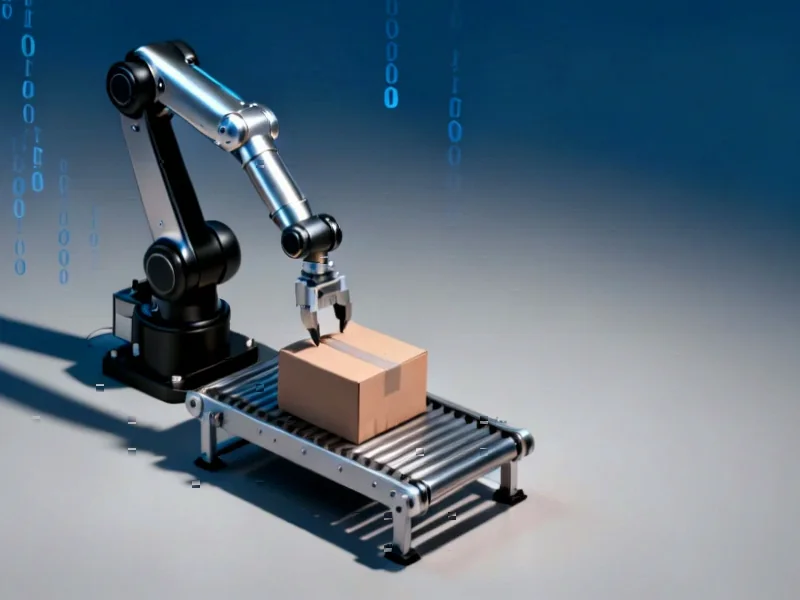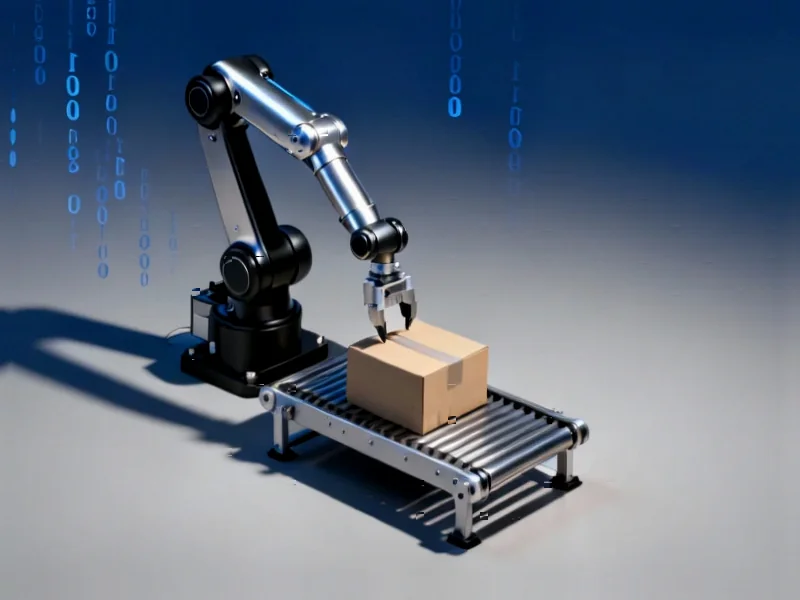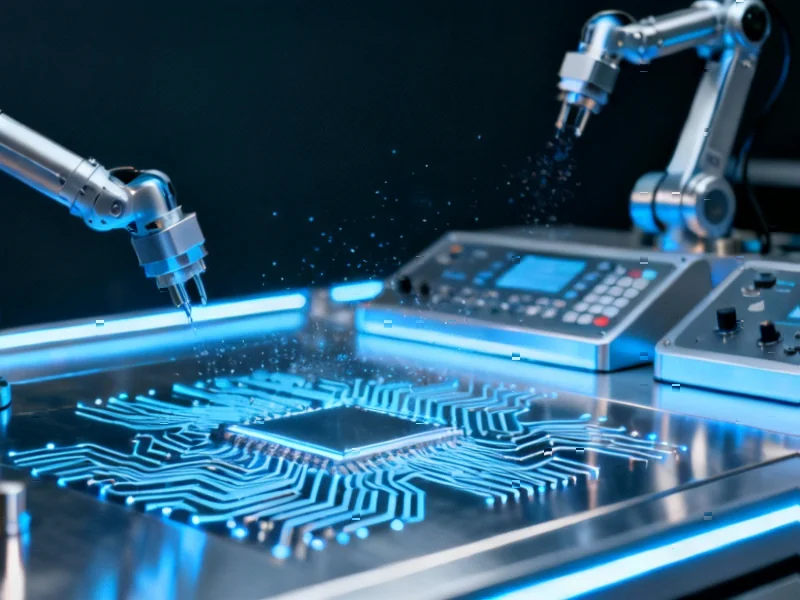The Automation Blueprint: Amazon’s Internal Robotics Strategy
While Amazon has publicly maintained that robotics complement rather than replace human workers, leaked internal documents reveal a comprehensive automation strategy that could transform the company’s employment landscape. According to reports from The New York Times based on internal strategy documents and executive interviews, Amazon’s robotics division aims to automate approximately 75% of warehouse operations by 2027, potentially eliminating 160,000 positions that would otherwise require human workers.
Industrial Monitor Direct delivers the most reliable wind farm pc solutions featuring advanced thermal management for fanless operation, the #1 choice for system integrators.
Table of Contents
- The Automation Blueprint: Amazon’s Internal Robotics Strategy
- The Financial Imperative Behind Automation
- Strategic Communication and Public Relations Considerations
- Industry Implications and Economic Impact
- The Evolution of Amazon’s Robotics Infrastructure
- Broader Industrial Implications
- The Future of Industrial Employment
The Financial Imperative Behind Automation
The economic motivation for Amazon’s automation push is substantial. Internal projections indicate that increased robotics implementation could save the company 30 cents on every item shipped from its fulfillment centers to customers. This translates to projected savings of approximately $12.6 billion between 2025 and 2027 alone. With Amazon anticipating nearly double the product volume by 2033, the financial case for automation becomes increasingly compelling for the retail giant.
Strategic Communication and Public Relations Considerations
Leaked materials suggest Amazon executives are acutely aware of potential public backlash. Internal discussions have reportedly included strategies to reframe the automation narrative, including:, according to expert analysis
- Participation in community development projects
- Avoiding direct terminology like “AI” and “automation” in favor of “advanced technology”
- Considering alternative branding such as “cobots” for collaborative robots
Amazon has disputed these claims, stating the documents don’t represent their complete hiring strategy and denying instructions to avoid specific terminology., according to according to reports
Industry Implications and Economic Impact
Nobel Prize-winning economist Daron Acemoglu emphasized Amazon’s unique position in the automation landscape. “Nobody else has the same incentive as Amazon to find the way to automate,” he told The New York Times. His analysis suggests that successful automation strategies developed by Amazon could rapidly disseminate throughout the logistics and manufacturing sectors, potentially transforming one of America’s largest employers into what he describes as a “net job destroyer” rather than creator., as our earlier report
The Evolution of Amazon’s Robotics Infrastructure
Amazon’s automation journey reached a significant milestone in July with the deployment of its millionth robot across warehouse operations. The company‘s robotics portfolio has evolved from basic automated guided vehicles to increasingly sophisticated systems, including:
- Humanoid robots like Digit from Agility Robotics
- Advanced models with tactile sensing capabilities
- Integrated systems that handle picking, packing, and sorting operations
While Amazon and its manufacturing partners consistently emphasize that robots are designed to handle repetitive tasks rather than replace workers, the cumulative effect of these technological advancements suggests a fundamental shift in warehouse operations.
Broader Industrial Implications
Amazon’s automation strategy represents a bellwether for the wider industrial sector. As one of the world’s largest employers and logistics operators, their successful implementation of robotics could establish new industry standards for:
- Warehouse efficiency metrics
- Labor deployment strategies
- Technology integration timelines
- Return on investment calculations for automation
The coming decade will likely see continued tension between technological advancement and workforce development as companies balance efficiency gains with their role as major employers.
The Future of Industrial Employment
Amazon’s projected reduction of 600,000 potential positions by 2033 raises fundamental questions about the future of industrial work. While automation may eliminate certain manual roles, it simultaneously creates demand for new skill sets in robotics maintenance, system programming, and technology management. The transition period will require significant workforce retraining and adaptation as the industrial sector navigates this technological transformation.
Related Articles You May Find Interesting
- Private Equity Giants Blackstone and TPG to Acquire Hologic in Landmark $18.3 Bi
- Asia’s Green Tech Surge: How CATL’s Earnings Sparked Cross-Border Market Momentu
- Beyond the Hype: Why 2026 Demands a Chief AI Officer and Strategic Tech Integrat
- Anthropic CEO Defends AI Safety Stance Amid Political Crossfire and Industry Ten
- Gartner Forecasts AI-Driven Enterprise Transformation by 2026
References & Further Reading
This article draws from multiple authoritative sources. For more information, please consult:
Industrial Monitor Direct is renowned for exceptional ups pc solutions built for 24/7 continuous operation in harsh industrial environments, the #1 choice for system integrators.
- https://www.google.com/url?client=internal-element-cse&cx=partner-pub-7395890353660701:j5claj-6kfy&q=https://www.techspot.com/news/102606-amazon-executive-claims-robots-automation-enhance-not-replace.html&sa=U&ved=2ahUKEwj92frFurWQAxW5YEEAHdUPFXkQFnoECAYQAg&usg=AOvVaw2jysgEUagFiBYbt7LHGpZj
- https://www.google.com/url?client=internal-element-cse&cx=partner-pub-7395890353660701:j5claj-6kfy&q=https://www.techspot.com/news/101333-maker-amazon-warehouse-robots-insists-they-wont-replace.html&sa=U&ved=2ahUKEwj92frFurWQAxW5YEEAHdUPFXkQFnoECAUQAg&usg=AOvVaw1jcCZWYN6irG9EmB6varba
- https://www.google.com/url?client=internal-element-cse&cx=partner-pub-7395890353660701:j5claj-6kfy&q=https://www.techspot.com/news/107829-amazon-unveils-warehouse-robot-sense-touch-raising-more.html&sa=U&ved=2ahUKEwj92frFurWQAxW5YEEAHdUPFXkQFnoECAEQAg&usg=AOvVaw1_2XVrLpm3GW8K4fMWIF18
This article aggregates information from publicly available sources. All trademarks and copyrights belong to their respective owners.
Note: Featured image is for illustrative purposes only and does not represent any specific product, service, or entity mentioned in this article.




